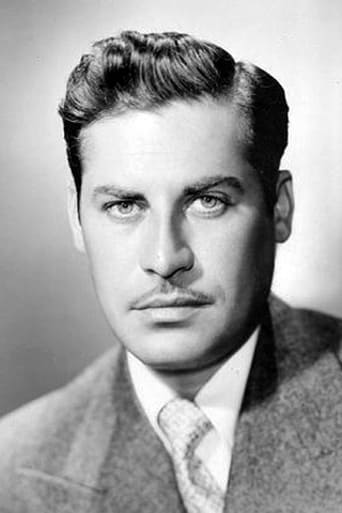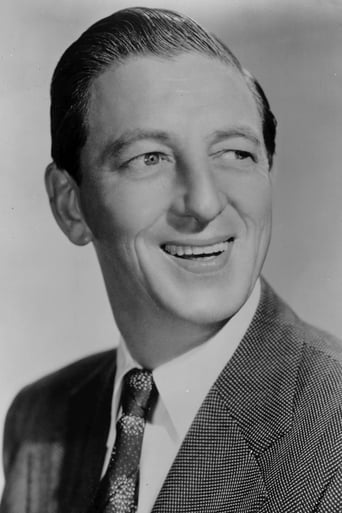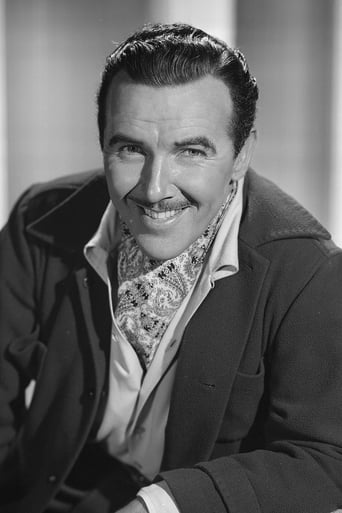jacobs-greenwood
Won an Oscar for Best Original Song ("On the Atchison, Topeka and Santa Fe"), its Score was also nominated. Otherwise, this troubled George Sidney Musical Comedy, with a story co-written by Eleanore Griffin, features an uninspired (O.K., forced) performance Judy Garland as one of the many titled restaurant women who helped "tame" the West. FYI, there's a 'museum' display at the Bright Angel Lodge on the South Rim of the Grand Canyon in Arizona which details the history of the Harvey Hotels.There's a love triangle angle with Garland's character and a sensitive saloon owner rival (John Hodiak) to "Harvey" who's misunderstood by his joint's main attraction (Angela Lansbury, whose singing voice is OBVIOUSLY dubbed, by Virginia Rees), and even an acrobatic performance by Ray Bolger.But the film is neither a great musical nor a particularly funny comedy, and the rest of its story fails to strike a balance anywhere in between that satisfies. Marjorie Main, Chill Wills, and Cyd Charisse (who dances, of course), among others, also lend their support in this losing effort.
weezeralfalfa
This is the story of the attempted transformation of a rowdy cow/miners small town in the Southwest into the beginnings of a civilized town, with wives and children eventually to outnumber the saloon girls and prostitutes who thus far dominated, at the conniving of a small clique of 'town bosses', headed by mayor 'Judge' Purvis and saloon proprietor Ned Trent("Nice girls can ruin a town" quips Purvis to Ned. In this case, the revolutionary civilizing influence is the sudden establishment of a Harvey restaurant, complete with conservatively- uniformed waitresses(Harvey girls), who are expected to measure up to a strict code of conduct, having already been put through a rigorous evaluation(historically by Mrs. Harvey). The other main features of the plot are also very familiar in films of this era. Boy and girl start off hating each other, but secretly are attracted to each other, go through a period as alternately lovers and enemies, then miraculously come together at the end, presumably happily ever after. In this case, its single Ned, proprietor of the town saloon, hence the obvious natural enemy of the new Harvey establishment. Although Judy Garland, as Susan Bradley, doesn't begin the film as a Harvey girl, she soon joins the troupe after discovering that the man she came to marry, sight unseen, (played by Chill Wills)is much older(44) and less sophisticated(probably illiterate) than she had been led to believe. In fact, it was Ned who ghost wrote the love letters for him: an embarrassing discovery for Susan, as she has reason to hate Ned. The initial dialogue between Judy and Wills, in which they gradually mutually agree that their pairing would be a mismatch, is one of the comedic highlights of the film. Prior to this, Wills grabbed 56 y.o. Marjorie Main, also just off the train, and kissed her, assuming she was his mail order bride. She was not impressed! Marjorie had played the maid in Judy's prior Technicolor musical "Meet Me in St. Louis". Here, she has graduated to being the head woman and cook for the Harvey house. Although she later gained fame starring in the "Ma and Pa Kettle " series, I generally prefer her as a secondary character in the various musicals she appeared in through 1950.Angela Lansbury plays Em: the leader of Ned's showgirls, and Ned's presumed prime squeeze. She gradually comes to recognize Susan as a potential rival for Ned's allegiance, despite their mostly very hostile relationship thus far. The animosity between Em and Susan reaches a head when Susan enters the saloon, looking for Cid Charisse: a Harvey girl, who is falling in love with piano player/singer Terry. As they trade insults, Cid runs to the Harvey house for reinforcements, anticipating a major confrontation. A mass cat fight in the saloon ensues: certainly one of the action highlights of the film! Unfortunately, Cid's considerable dancing talent is kept under wraps, with only a hint of it in the prior scene with Terry.Despite a couple of romantic moments together, Susan continues to blame Ned for a series of strong hints that someone is trying to scare the Harvey girls way. Actually, based on his attraction to Susan, Ned has gradually been changing sides. It's Judge Purvis who's been trying to derail the Harveys, and discourage the return of a church to town.(Purvis gets a cut of Ned's saloon profits for discouraging civilizing influences and competition.) When Purvis and his goon burn down the Harvey house while the whole town is at a party elsewhere, Ned decides it's time to move his gang to another town. Not knowing that Ned, at the last moment, decided not to board the train with his girls, hoping to patch things up with Susan, she secretly boards the train, hoping to patch things up with Ned! En(Angela) finally gets a bit of good press when she tells Susan that Ned stayed behind for her. The train stops! so that Ned, galloping on his horse, can catch up. Susan ends the film in a wedding dress. The film offers an excellent blend of comedy, drama, action and musical numbers, thus deserves to be remembered. I haven't mentioned one of the major stars: Ray Bolger, immortalized as 'the scarecrow', with Judy, in "The Wizard of Oz". Unfortunately, his considerable talents as a comedian and eccentric vaudeville-styled dancer is underutilized, his character being ill-defined. He interacts minimally with Judy. However, at the big party, we do see a good sampling of his comedic eccentric dancing style. For a meatier role and additional sampling of his quirky dancing, I suggest the subsequent "Look for the Silver Lining", in which June Haver take's Judy's place as the leading lady.Having seen the outtakes of the musical numbers "My Intuition", and "March of the Doagies", I definitely believe these should have been included, perhaps time wise replacing the lame "In the Valley"(with which the film begins), and the lengthy bland "It's a Great Big World", which included Virginia O'Brien, along with Judy and Cid. Virginia gets a solo in the sarcastic "The Wild, Wild, West", while demonstrating to Bolger how to make a horseshoe and shoe a horse. Thankfully, her trademark deadpan delivery is minimized. She disappears in the later part of the film, due to an advancing pregnancy. Judy's persistent absences and tardiness threw off a schedule designed to be finished before this pregnancy stage.The keeper song and musical production "The Atchison, Topeka and Santa Fe" is, of course, the musical highlight of the Harry Warren-Johnny Mercer collaboration, which would be renewed for "The Belle of New York".
mark.waltz
Judy Garland is the female Destry of this movie, a glossy musical western less about settling the range, but bringing hospitality out to the plains. The Harvey Girls are waitresses, brought in to work at the old restaurant chain in major stops for passenger trains after the western plains were settled a bit. Of course, these pretty girls are threats for the saloon girls for the attentions (or pocket books) of the local men, so that's gonna mean trouble.Judy is a demure mail order bride who ends up a waitress when she finds out that her husband to be is Chill Wills, who willingly lets her go. She has an instant rival in the bitchy Angela Lansbury who isn't afraid to ruin a few feathered boas to keep the waitresses from getting in her way. But Lansbury doesn't count on milquetoast Judy in gaining the affections of saloon owner John Hodiak from her. This means war! In the first film where Judy truly got to be a grown-up (at the age of 23!), she shows off more than her vocal talents, but her knack for comedy as well. The catfight scene between Lansbury's saloon girls and the Harvey Girls is especially funny with the sight of Judy standing around in the middle of the ruckus, being practically invisible as everybody but her gets smacked, kicked or thrown across the room. She's also feisty, dealing with stolen steaks so bravely you'd think she was John Wayne protecting the stagecoach as he road across the range.There's a great supporting cast of musical talent, including rubber-legged Ray Bolger, dead-panned Virginia O'Brien and sweet Cyd Charisse. Even raspy voiced Marjorie Main (as the head cook) gets into the singing act, participating in the Oscar Winning number "On the Antison Topeka and the Santa Fe" and being a comical dancer in the "Round and Round" production number. She is hysterical showing the waitresses how to set the table during the title song. Unfortunately, Lansbury (who later showed her singing chops in Broadway musicals) was obviously dubbed, so those who have seen her on stage or heard the cast albums are sure to ask, "Huh?" when her character performs a saloon number.As musicals go, none were more lavish than MGM's, especially those from the Arthur Freed unit. Having proved his metal with Garland the year earlier with "Meet Me in St. Louis", he confirmed it here, although it is George Sidney in the director's chair, not Vincent Minnelli. There would be many more classics from Freed (a few with Garland). and "The Harvey Girls" remains as fresh and entertaining today as it did when it thrilled audiences in 1946.
ptb-8
If Technicolor MGM finesse is enough to stun you (and it easily can be enough) then THE HARVEY GIRLS is 3D color heaven. As a musical and as a movie, I found it weirdly flat. In Australia where these films were huge box office successes, MGM reissued many of their 40s and 50s musicals right up to the late 60s. The few that were not on the reissue list included THE HARVEY GIRLS. ... whether it was too American (!?) or whether it just did not have the pizazz or the fantasy we in Oz seem to love, I am not sure but I can feel my reasons why I became bored with it. On the plus side, I was constantly enchanted with gorgeous Garland aged 22, the breathtaking Technicolor photography and any close up of Angela Lansbury, clothed to the dazzling hilt. I can see how and why this film went through various changes during production and it feels like an overdressed version of another more ordinary western gussied into being a 1945 musical. OKLAHOMA's 1943 stage success is quite evident. Research shows that MGM saw a chance to emulate OKLAHOMA'ssuccessful stage result and contrived a western on the production conveyor belt into a pseudo OKLAHOMA - ish movie by wrangling THE HARVEY GIRLS into the form it is now. This explains why the film seems disjointed and pieced from different imagery and ideas. I found John Hodiak creepy with his odd teeth/mustache (that scary grin!) and no leading romantic man for Judy. I don't know what a Doagie is and I can't for the life of me see how the Joan Of Arc style bonfire number could have ever fitted into the finished film... which to me is startling in its exorcist/hell imagery with Judy looking like she is about to scream and melt. It is another weirdness in/out of a film full of off kilter ideas that seem to have been added as afterthoughts. Marjorie main has a great 'setting the table' number, and silly Ray Bolger again flips and wiggles out of place... looking like another weird addition among the rest. The big number at the start is fantastic, the set wonderful, the train line through the main street eye catching, and again the costume design and color photography superb. There is great use of the colour orange... whether as oleanders or with black and white stripes, but it is a keen colour featured throughout. It's all like a mosaic tile floor that is a movie.






